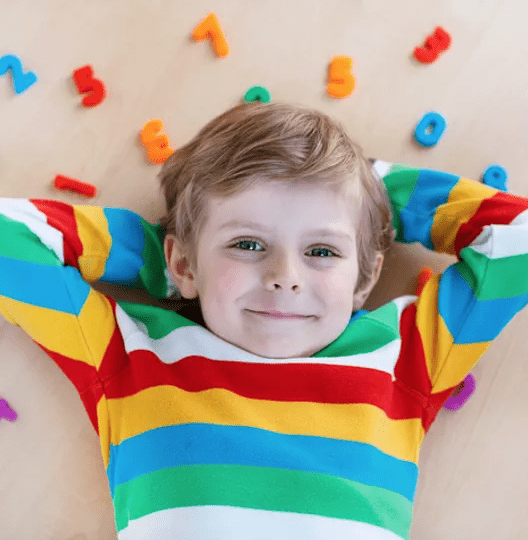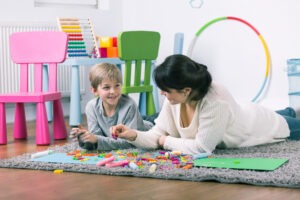K Sound Errors are Common As Children Learn to Develop Speech
During the toddler years, as children develop and fine tune their ability to speak, they often use predictable patterns of sound errors (also known as Phonological Processes) to simplify adult speech.
A phonological process related to K sounds errors is known as “fronting”. This occurs when children substitute K and G sounds with T and D sounds.
K and G sounds, also known as velar sounds, are produced in the back of the mouth. The back of the tongue touches the velum (soft palate). Make a few K sounds with your hand on your throat. Hopefully you’ll be able to feel that the sound is coming from the very back of your mouth.
Alternatively, T and D sounds, also known as alveolar sounds, are produced in the front of the mouth where your tongue meets the ridge just above the back of your two front teeth. Say a few T sounds and you’ll see what I mean.
If your child is fronting, You may hear, “tar” for “car” or “bite” for “bike” or “do” for “go.”
At What Age Should a Child Accurately Produce K?
By 3-3 ½ years of age, many children master these velar sounds. However, some children have a harder time learning these sounds. It doesn’t help that your child can’t see these sounds being produced! These are the most difficult sounds for our young ones to visualize!
Here are Some Tips For Home Practice
Here are some tips for what you can do at home to facilitate your child’s production of “back” sounds.
*Have your child sit directly in front of you. Model the sound for your child with your mouth as open as possible. While you say the sound, touch your upper throat and explain to your child that this is where the sound is being made. Then, have your child touch his/her throat to feel where the sound comes from. Your child may need some help finding the correct place. Encourage self-awareness and use a mirror to direct your child.
*Before you ask your child to produce the K sound, ask him/her to cough. Coughing gives a child a more concrete way of learning the correct placement of the K sound.
*Gravity! Have your child lie down on his/her back. Your child’s tongue will automatically touch the back of his/her mouth. Ask your child to say K-K-K-K.
*Once your child can produce the sound correctly in isolation, begin to practice the sound in syllables, words, phrases and sentences. Try to make practice fun by using highly motivating toys and games.
*Throughout the day, try to be aware of your own speech. While you talk to your child, be sure to emphasize and exaggerate the K sound in words. For example, you might say to your child, “Come see this Cat.” Your child hears the sounds and will hopefully imitate these words correctly.
*Remember to provide positive and specific feedback to your child such as, “That was great! I heard the sound coming from the back of your mouth.”
*You may wonder if you need to teach your child the velar G sound as well. Very often, it is not necessary to teach the G sound as it usually develops on its own once a child is able to produce the K sound.
What if My Child is Still Unable to Produce K?
Many children will require speech therapy in order to learn to accurately produce the K and G sound. TherapyWorks can help! We provide speech therapy services in-home or virtually. Our experienced team will be able to “fix” your child’s speech sound errors while making the process fun! Click here to get started.




